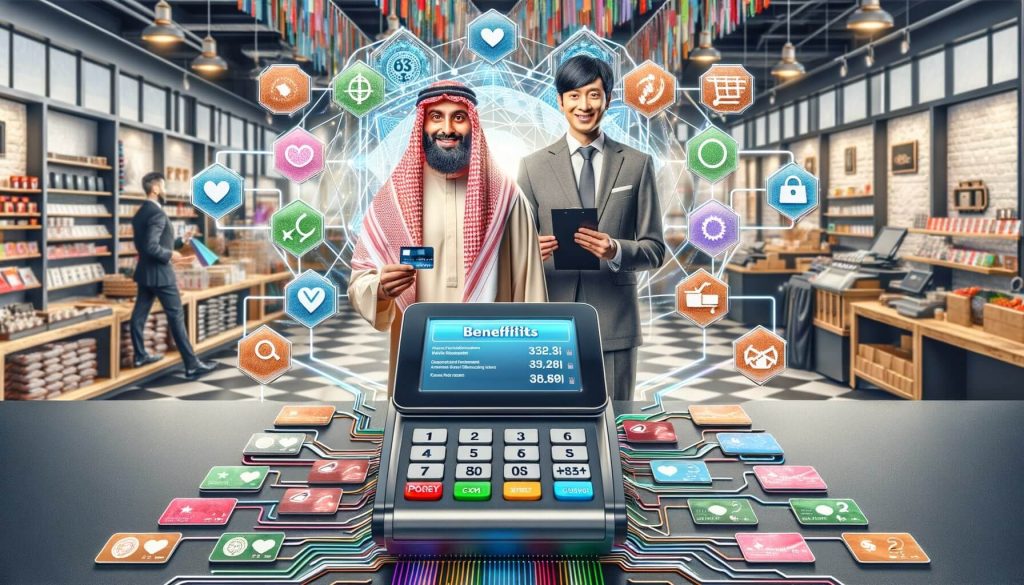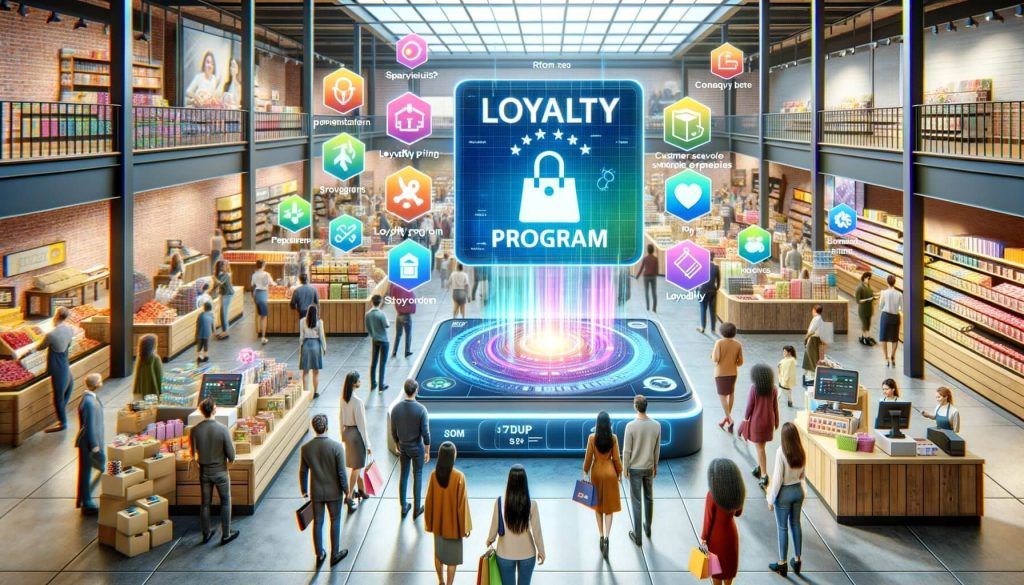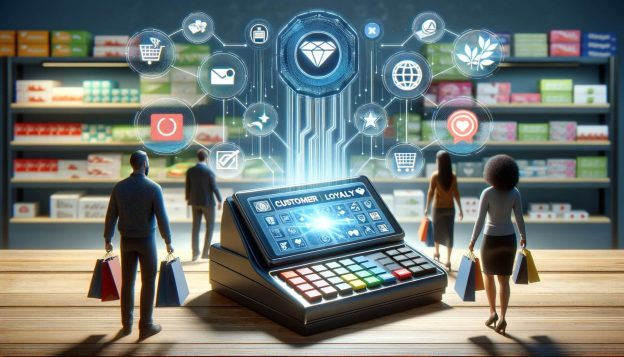In today’s competitive business landscape, customer loyalty has become a crucial factor for the success of any business. Customer loyalty programs are designed to incentivize customers to continue purchasing from a particular brand or business. These programs offer rewards, discounts, and other benefits to customers who frequently engage with the brand. One effective way to manage and support customer loyalty programs is by utilizing a Point of Sale (POS) system.
A POS system is a software and hardware solution that enables businesses to process transactions, manage inventory, and track sales. It serves as the central hub for all retail operations, providing businesses with the tools they need to streamline their processes and enhance customer experiences. When integrated with a customer loyalty program, a POS system can offer numerous benefits and help businesses build stronger relationships with their customers.
Benefits of Implementing a POS System for Customer Loyalty Programs

Implementing a POS system for customer loyalty programs can bring a wide range of benefits to businesses. Firstly, it allows businesses to track and analyze customer data more effectively. By capturing customer information at the point of sale, businesses can gain valuable insights into customer behavior, preferences, and purchasing patterns. This data can then be used to tailor loyalty programs and marketing strategies to better meet the needs of customers.
Secondly, a POS system can automate the process of enrolling customers into loyalty programs. Instead of relying on manual sign-ups, a POS system can automatically enroll customers based on their purchase history or other criteria. This not only saves time for both customers and employees but also ensures that no customer is left out of the loyalty program.
Furthermore, a POS system can provide real-time visibility into loyalty program performance. Businesses can easily track the number of sign-ups, redemptions, and overall program engagement. This data can help businesses identify trends, measure the effectiveness of their loyalty programs, and make data-driven decisions to optimize program performance.
Key Features to Look for in a POS System for Loyalty Programs

When selecting a POS system to support customer loyalty programs, there are several key features to consider. Firstly, the system should have robust customer management capabilities. It should allow businesses to capture and store customer information, such as contact details, purchase history, and preferences. This information can then be used to personalize loyalty program offers and communications.
Secondly, the POS system should have seamless integration with loyalty program software. This integration ensures that customer data is automatically synced between the POS system and the loyalty program, eliminating the need for manual data entry and reducing the risk of errors.
Another important feature to look for is the ability to create and manage different types of loyalty programs. Some businesses may prefer a points-based system, where customers earn points for each purchase and can redeem them for rewards. Others may opt for a tiered system, where customers unlock different levels of benefits based on their loyalty. The POS system should offer flexibility in designing and managing these programs to cater to the unique needs of each business.
How to Set Up and Customize a Customer Loyalty Program in a POS System

Setting up and customizing a customer loyalty program in a POS system requires careful planning and consideration. The first step is to define the objectives and goals of the loyalty program. Businesses should determine what they want to achieve through the program, whether it is to increase customer retention, drive repeat purchases, or attract new customers.
Once the objectives are clear, businesses can start designing the structure of the loyalty program. This includes deciding on the type of program (points-based, tiered, etc.), the rewards and benefits offered, and any special promotions or incentives. The POS system should provide the flexibility to customize these elements according to the business’s specific requirements.
After designing the program, businesses need to set up the loyalty program in the POS system. This involves configuring the system to track customer purchases, calculate points or rewards, and manage redemptions. The POS system should have an intuitive interface that allows businesses to easily set up these parameters without requiring extensive technical knowledge.
Once the loyalty program is set up, businesses should communicate it to their customers. This can be done through various channels, such as email marketing, social media, and in-store signage. The POS system should have built-in tools or integrations that enable businesses to promote their loyalty program effectively.
Strategies for Promoting and Marketing Your Loyalty Program through a POS System

Promoting and marketing a loyalty program is crucial to its success. A POS system can play a significant role in driving awareness and engagement with the program. Here are some strategies for effectively promoting and marketing a loyalty program through a POS system:
1. In-store signage: Displaying signage at the point of sale is an effective way to inform customers about the loyalty program. The POS system should allow businesses to create and print customized signage that highlights the benefits and rewards of the program.
2. Transactional messaging: The POS system can be configured to automatically display messages or prompts to customers during the checkout process. These messages can remind customers to join the loyalty program or inform them about available rewards and discounts.
3. Email marketing: The POS system should have integration with email marketing software, allowing businesses to send targeted emails to customers about the loyalty program. These emails can include personalized offers, program updates, and exclusive promotions.
4. Social media integration: The POS system should enable businesses to share loyalty program updates and promotions on social media platforms. This can help generate buzz and encourage customers to join the program.
5. Referral programs: The POS system can facilitate the implementation of referral programs, where existing customers are rewarded for referring new customers to the loyalty program. This can help businesses expand their customer base and increase program engagement.
Analyzing Customer Data and Insights with a POS System for Loyalty Programs
One of the most valuable aspects of using a POS system for loyalty programs is the ability to analyze customer data and gain insights into customer behavior. The POS system captures a wealth of data at the point of sale, including purchase history, transaction details, and customer demographics. This data can be leveraged to make informed business decisions and optimize the loyalty program.
The first step in analyzing customer data is to consolidate and organize it in a meaningful way. The POS system should have robust reporting capabilities that allow businesses to generate detailed reports on loyalty program performance, customer engagement, and sales trends. These reports can provide valuable insights into which products or promotions are driving the most loyalty program activity.
Businesses can also use the POS system to segment customers based on their purchasing behavior or demographics. This segmentation can help identify high-value customers, understand their preferences, and tailor loyalty program offers to their specific needs. For example, if the data shows that a particular customer segment prefers discounts on specific products, businesses can create targeted promotions to incentivize purchases from that segment.
Furthermore, the POS system can enable businesses to track the effectiveness of loyalty program campaigns. By comparing sales data before and after a campaign, businesses can measure the impact of the campaign on customer behavior and loyalty program engagement. This data-driven approach allows businesses to refine their marketing strategies and optimize the performance of their loyalty programs.
Integrating Online and Offline Customer Loyalty Programs with a POS System
In today’s omnichannel retail environment, businesses often operate both online and offline channels. To effectively manage customer loyalty programs, it is essential to integrate online and offline systems seamlessly. A POS system can serve as the central hub for managing and synchronizing loyalty programs across different channels.
The first step in integrating online and offline loyalty programs is to ensure that the POS system has the capability to capture and sync customer data from both channels. This includes online purchases, in-store transactions, and any other touchpoints where customers interact with the brand. The POS system should have integrations with e-commerce platforms, website analytics tools, and other relevant systems to facilitate this data synchronization.
Once the data is synchronized, businesses can leverage it to create a unified customer experience across channels. For example, if a customer earns loyalty points through an online purchase, they should be able to redeem those points in-store and vice versa. The POS system should have the flexibility to handle these cross-channel redemptions and ensure a seamless experience for customers.
Furthermore, businesses can use the POS system to track and attribute online sales to specific loyalty program members. This allows businesses to accurately measure the impact of online marketing efforts on loyalty program engagement and customer retention.
Best Practices for Managing and Maintaining a Customer Loyalty Program with a POS System
Managing and maintaining a customer loyalty program requires ongoing effort and attention. Here are some best practices for effectively managing and maintaining a loyalty program with a POS system:
1. Regularly review and update the program: Loyalty programs should evolve with the changing needs and preferences of customers. Businesses should regularly review the program’s performance, gather feedback from customers, and make necessary updates to keep it relevant and engaging.
2. Train employees on the loyalty program: Employees play a crucial role in promoting and supporting the loyalty program. Businesses should provide comprehensive training to employees on how the program works, its benefits, and how to enroll customers. The POS system should have user-friendly interfaces and clear workflows to facilitate employee training.
3. Monitor program engagement: The POS system should provide real-time visibility into program engagement metrics, such as sign-ups, redemptions, and customer feedback. Businesses should regularly monitor these metrics to identify any issues or areas for improvement.
4. Offer personalized rewards and incentives: The POS system should enable businesses to offer personalized rewards and incentives based on customer preferences and behavior. This can help increase program engagement and customer satisfaction.
5. Communicate program updates and promotions: Regularly communicate program updates, new rewards, and special promotions to customers through various channels, such as email, social media, and in-store signage. The POS system should have built-in tools or integrations to facilitate these communications.
Common Challenges and Solutions in Implementing a POS System for Loyalty Programs
Implementing a POS system for loyalty programs can come with its own set of challenges. Here are some common challenges businesses may face and potential solutions to overcome them:
1. Technical integration issues: Integrating a POS system with existing loyalty program software or other systems can be complex. Businesses should work closely with their POS system provider and loyalty program software provider to ensure a smooth integration process. It is important to thoroughly test the integration before going live to identify and resolve any issues.
2. Data privacy and security concerns: Collecting and storing customer data through a POS system raises privacy and security concerns. Businesses should implement robust data protection measures, such as encryption and access controls, to safeguard customer information. It is also important to comply with relevant data protection regulations, such as the General Data Protection Regulation (GDPR).
3. Employee resistance to change: Implementing a new POS system and loyalty program may face resistance from employees who are accustomed to existing processes. Businesses should provide comprehensive training and support to employees to help them adapt to the new system. Clear communication about the benefits of the new system can also help alleviate resistance.
4. Limited customer adoption: Launching a loyalty program does not guarantee immediate customer adoption. Businesses should actively promote the program through various channels and incentivize customers to join. Offering attractive rewards and benefits can help encourage customers to participate in the program.
Future Trends and Innovations in POS Systems for Customer Loyalty Programs
As technology continues to evolve, POS systems for customer loyalty programs are also expected to undergo significant advancements. Here are some future trends and innovations to watch out for:
1. Mobile loyalty programs: With the increasing use of smartphones, mobile loyalty programs are gaining popularity. POS systems will likely offer mobile app integrations that allow customers to easily enroll, earn, and redeem rewards using their smartphones.
2. Artificial intelligence and machine learning: POS systems may incorporate artificial intelligence and machine learning capabilities to analyze customer data and provide personalized recommendations. These technologies can help businesses better understand customer preferences and tailor loyalty program offers accordingly.
3. Integration with digital wallets: As digital wallets become more prevalent, POS systems may integrate with popular digital wallet platforms, allowing customers to seamlessly earn and redeem loyalty rewards through their preferred payment method.
4. Enhanced customer engagement tools: POS systems may offer advanced customer engagement tools, such as personalized push notifications, in-app messaging, and social media integrations. These tools can help businesses stay connected with their customers and drive loyalty program engagement.
FAQs
Q1. Can a POS system support multiple loyalty programs?
Yes, a POS system can support multiple loyalty programs. Businesses can create and manage different loyalty programs for different customer segments or product categories. The POS system should provide the flexibility to customize and configure multiple loyalty programs, allowing businesses to tailor their loyalty offerings to specific customer groups.
Q2. Can a POS system track customer purchases without a loyalty program?
Yes, a POS system can track customer purchases even without a loyalty program. Every transaction processed through the POS system is recorded and stored in the system’s database. This data includes information such as the date and time of the purchase, the items purchased, and the payment method used. Businesses can leverage this data to analyze customer behavior and make data-driven decisions, even without a formal loyalty program.
Q3. Can a POS system integrate with third-party loyalty program providers?
Yes, many POS systems offer integration capabilities with third-party loyalty program providers. This allows businesses to leverage the features and benefits of a specialized loyalty program provider while still using their preferred POS system for transaction processing and data management. Integration with third-party providers can provide businesses with additional loyalty program features, such as advanced analytics, gamification, or referral programs.
Q4. How can businesses measure the success of their loyalty program?
Businesses can measure the success of their loyalty program by tracking key performance indicators (KPIs) such as enrollment rate, redemption rate, average spend per loyalty program member, and customer retention rate. These metrics provide insights into the effectiveness of the loyalty program and its impact on customer behavior and business performance. By regularly monitoring these KPIs, businesses can identify areas for improvement and make data-driven decisions to optimize their loyalty program strategies.
Conclusion
Using a POS system to support customer loyalty programs can bring numerous benefits to businesses. It enables businesses to track and analyze customer data, automate program enrollment, and provide real-time visibility into program performance. By integrating online and offline loyalty programs, businesses can create a unified customer experience and drive engagement across channels.
However, implementing a POS system for loyalty programs may come with challenges, such as technical integration issues and employee resistance to change. By following best practices and staying abreast of future trends and innovations, businesses can effectively manage and maintain their loyalty programs and build stronger relationships with their customers.

